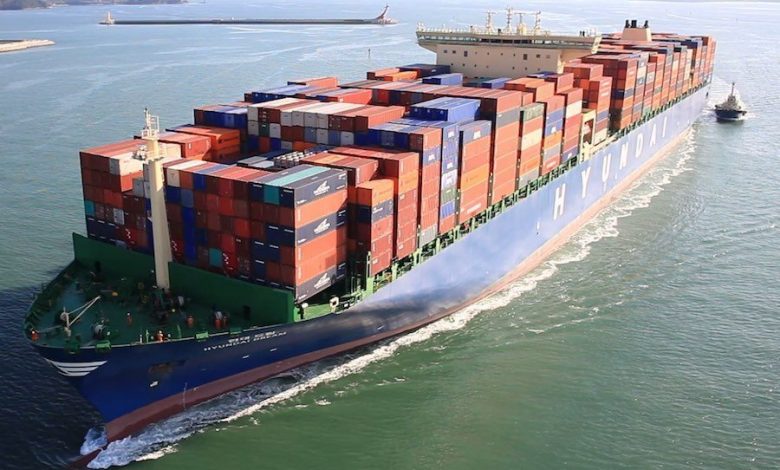HMM denies it is preparing for life without Maersk and MSC

January 1, 2020 marks a date creating headaches for shipowners around the world as they gear up for the introduction of IMO’s global 0.5% sulphur cap. However, for one Korean carrier it is another date, three months later, that is causing consternation.
Hyundai Merchant Marine (HMM), South Korea’s flagship carrier, appears to be making all the moves necessary to prepare for life without MSC and Maersk once its 2M vessel sharing agreement comes up for renewal on April 1, 2020.
Amid a dramatic restructuring in which it skirted with bankruptcy HMM was shunned by the other major carrier alliances in 2016, but pulled off a coup by signing on in March 2017 to work with the world’s top two carriers, Maersk and MSC, in the 2M agreement. The agreement, 2M+H, included a series of slot exchanges and slot purchases on East-West routes. The length of the cooperation was set for an initial three years with an option to extend if all parties agree.
While on the surface all spokespeople for the three companies contacted by Splash profess to be happy with the existing arrangement, beneath the surface it looks increasingly like HMM will need to be in the shop window to coax new partners come April Fool’s Day in 2020.
“HMM has no issues and is very pleased with this strategic cooperation with 2M,” a spokesperson for the Korean carrier told Splash from the company’s Seoul headquarters.
However, recent decisions by HMM point to a more strained relationship with its European partners.
HMM has recently exited slot purchase agreements it had with MSC and Maersk on Atlantic and Australian trades, tradelanes admittedly not covered within the 2M agreement, in favour of other carriers. Moreover, in April HMM reentered the Asia-Europe tradelane with a new standalone Asia-North Europe Express (AEX) service using ten 4,600 teu vessels. Previously it had been taking space on the tradelane via its partnership with 2M. It followed this up with a huge 20 mega boxship order, inked with compatriot yards at the start of this month, which will head onto the Asia-Europe tradelane when they deliver in 2020.
Consultants Drewry said in a report earlier this year that the new ships will be used by HMM as a bargaining chip to extend its relationship with 2M in a couple of years or to leverage full membership of another carrier group such as THE Alliance.
The ship orders – and specifically the financing of these vessels – is something that has irritated both Soren Skou and Diego Aponte, the heads of Maersk and MSC, respectively. Both men have gone on the record in recent months voicing their concern at Asian carriers being able to tap state funds to grow their fleets.
Commenting on HMM’s position in relation to 2M, Splash columnist Kris Kosmala, VP for Quintiq Asia Pacific, said: “HMM has to do something else but the management there is calcified, they have no idea what different really means. Let’s not forget also that there is probably little ambition among the old guard to try something new on their own. I think they will hang on for longer to the 2M alliance and react only if 2M or specifically Maersk forces them to do something they don’t want or their creditors don’t want.”
All container analysts contacted by Splash on the matter agreed HMM would have to find some alliance agreement come April 2020. It would be incapable of going it alone as a global operator.
“They will have to find some agreement with one of the alliances – just as they had to find an agreement two years ago,” said Lars Jensen, a partner at SeaIntelligence Consulting, citing the risk for HMM of having a very limited scope in direct point-point combinations compared to the three alliances.
Neil Dekker, container consultant at ClipperMaritime, argued that HMM’s fleet build up could prove attractive to 2M, helping fill holes in its global network.
“For the moment, the 2M lines are making new operational agreements on the transpacific to share slots and in principle the relationship is strong,” Dekker said.
2M runs six weekly Asia-North Europe loops right now with a total of 68 ships. When all of the orderbook is delivered 2M will have 62 ships of 18,000 teu and above meaning gaps will have to be filled by smaller ships of 15,000 to 16,000 teu.
“This may be acceptable but inserting another loop of 23,000 teu ships will be attractive for the 2M lines to help grow market share without the additional capex,” Dekker said, pointing to HMM’s recent mega boxship orders.
“The bigger picture is also to expand into other emerging markets including Africa, Latin America , intra-Asia, the Middle East where HMM also has aspirations,” Dekker added.
